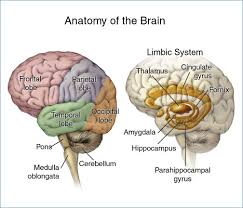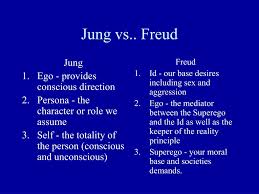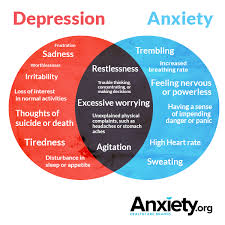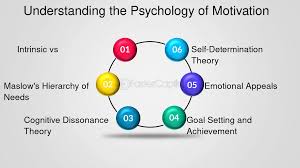Memory is one of the most fascinating and intricate aspects of the human brain. It shapes who we are, how we learn, and how we interact with the world around us. Whether it’s remembering a childhood event, memorizing a speech, or recalling the answer to a test question, memory plays a crucial role in our daily lives. But how does memory actually work? What is the science behind it?
In this article, we will explore the various aspects of memory, from the biological mechanisms to the different types of memory, and the processes involved in encoding, storing, and retrieving information. By understanding how memory works, we can gain insights into improving our ability to learn and retain information, as well as understanding how memory loss and cognitive decline can affect our lives.
What Is Memory?
At its core, memory is the process by which the brain encodes, stores, and retrieves information. It involves the ability to take in sensory information, process it, and then store it in such a way that it can be recalled at a later time. This process is essential for learning, decision-making, problem-solving, and all forms of intellectual engagement.
There are three main stages in the memory process:
- Encoding: The process of converting information into a form that can be stored in memory.
- Storage: The retention of encoded information over time.
- Retrieval: The process of accessing stored information when needed.
These stages are not isolated but are interconnected, and how well each stage is executed determines how effective our memory is in retaining and recalling information.
Types of Memory
Memory is not a single, monolithic entity. Instead, it consists of several different types that serve distinct functions. These types can be broadly classified into three categories: sensory memory, short-term memory, and long-term memory.
1. Sensory Memory
Sensory memory is the shortest type of memory. It involves the initial recording of sensory information, such as sights, sounds, and smells. Sensory memory lasts for just a fraction of a second to a few seconds, and its purpose is to retain an exact replica of sensory input long enough for further processing.
For example, when you see a flash of lightning, your sensory memory retains the image for a brief moment after the actual event has passed. This allows you to perceive a continuous stream of sensory data without interruption, even though individual sensory inputs are fleeting.
There are two main types of sensory memory:
- Iconic memory: Visual sensory memory, which holds images for about 0.5 seconds.
- Echoic memory: Auditory sensory memory, which can last from 3 to 4 seconds.
2. Short-Term Memory (STM)
Short-term memory, also known as working memory, is the next stage after sensory memory. It holds information for a short period—typically 20 to 30 seconds—and has a limited capacity. Research suggests that short-term memory can hold approximately seven items, give or take two, although this varies from person to person.
For example, when you try to remember a phone number long enough to dial it, you are using your short-term memory. If the information is not actively rehearsed, it will be forgotten. However, if you do rehearse it or connect it to existing knowledge, it may be transferred to long-term memory.
Working memory is often considered a more dynamic version of short-term memory. It involves the temporary manipulation of information and the ability to manage and organize the details actively. Working memory is crucial for tasks like problem-solving, reasoning, and language comprehension.
3. Long-Term Memory (LTM)
Long-term memory is the final stage of memory storage. Unlike short-term memory, long-term memory can store vast amounts of information for potentially an entire lifetime. This includes facts, experiences, and skills that we accumulate over time. Long-term memory can be further divided into two categories: explicit memory and implicit memory.
- Explicit memory (Declarative Memory): This type of memory involves conscious recall of facts and events. It can be further broken down into:
- Episodic memory: Memories of personal experiences and events (e.g., your last birthday).
- Semantic memory: General knowledge about the world (e.g., knowing that Paris is the capital of France).
- Implicit memory (Non-declarative Memory): This type of memory involves unconscious memory, such as skills and habits. It is not available for conscious recall but influences our actions. An example of implicit memory is riding a bike or typing on a keyboard.
The Process of Memory Formation
Memory formation involves a complex series of biological and chemical processes in the brain. These processes primarily occur in the hippocampus, amygdala, and other regions of the brain.
1. Encoding Information
The first step in memory formation is encoding, which is the process of converting sensory input into a format that can be stored in the brain. During encoding, the brain transforms external stimuli—whether they are sights, sounds, or smells—into electrical signals. These signals are then sent to different parts of the brain for processing and storage.
For example, when you read a sentence, your eyes perceive the text and send the information to the visual cortex. This information is then encoded into a neural pattern that can be stored and retrieved later.
Several factors influence how well we encode information, including attention, emotion, and motivation. If we are highly focused or emotionally engaged, we are more likely to encode the information more effectively.
2. Consolidation
Once information is encoded, it undergoes a process known as consolidation. Consolidation refers to the stabilization and strengthening of memories, making them more durable over time. This process involves the transfer of information from short-term memory to long-term memory.
Consolidation occurs primarily during sleep, particularly during deep sleep and REM (Rapid Eye Movement) sleep stages. Research shows that sleep plays a critical role in enhancing memory retention by facilitating the transfer of memories from the hippocampus to the neocortex, where they are stored for the long term.
3. Retrieval
The final stage of memory involves retrieval, which is the process of accessing stored information when needed. Retrieval can be triggered by cues, such as a specific word, sound, or visual stimulus, that prompts the brain to recall a memory.
There are different types of retrieval:
- Recall: The ability to retrieve information without external cues (e.g., remembering a phone number).
- Recognition: The ability to identify previously learned information when it is presented again (e.g., recognizing a familiar face).
Retrieval can be influenced by various factors, including stress, mood, and context. For instance, we are more likely to recall memories when we are in the same environment or emotional state as when the memory was formed, a phenomenon known as context-dependent memory.
The Role of Neurotransmitters and Brain Regions in Memory
Memory is a product of complex brain activity, and various chemicals and brain regions play important roles in different aspects of memory processing.
- Neurotransmitters: These are chemical messengers that transmit signals between neurons. In memory processes, neurotransmitters such as dopamine, glutamate, and acetylcholine are critical for encoding, consolidation, and retrieval. For example, acetylcholine is involved in attention and memory consolidation, while dopamine is important for motivation and reward-based learning.
- The Hippocampus: This region of the brain is essential for forming new explicit memories and consolidating them into long-term memory. Damage to the hippocampus can lead to difficulties in forming new memories, as seen in conditions like Alzheimer’s disease.
- The Amygdala: This part of the brain is involved in emotional processing and can enhance the consolidation of emotional memories. For instance, strong emotional events are often remembered more vividly than neutral events due to the involvement of the amygdala.
Memory and Aging
As we age, our memory can naturally decline. This process, known as age-related memory decline, typically affects working memory, episodic memory, and the ability to retrieve information quickly. However, it is important to note that not all memory declines with age, and some aspects of memory, such as semantic memory, may remain intact or even improve with age.
Alzheimer’s disease and other forms of dementia are more severe memory impairments that involve damage to brain structures, including the hippocampus and the amygdala. In these conditions, memory loss can become profound, affecting not only short-term memory but also long-term memory and the ability to recognize familiar faces and places.
Conclusion
Memory is a remarkable and complex function of the brain. It allows us to retain information, learn from experience, and adapt to the world around us. By understanding the science behind memory, we can appreciate the processes that shape our ability to learn, recall, and function in daily life. From encoding to retrieval, the journey of a memory is shaped by numerous factors, including brain regions, neurotransmitters, and our own attention and emotional states.
The study of memory is not only important for understanding how we learn but also for improving our cognitive abilities and dealing with memory-related conditions. Whether it’s through enhancing learning strategies, understanding the role of sleep, or exploring treatments for memory disorders, the science behind memory offers profound insights into both normal cognitive function and the challenges of memory loss.




